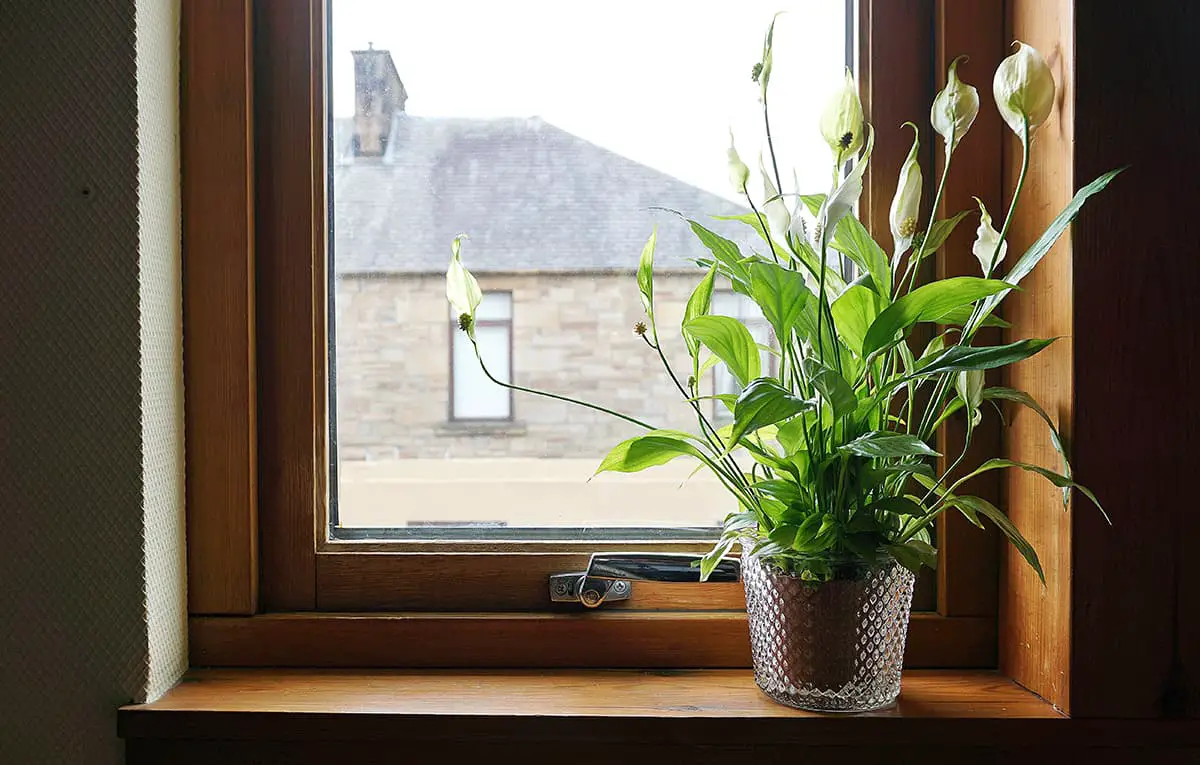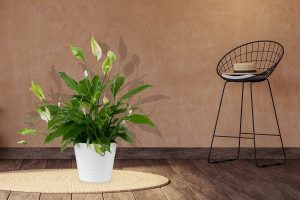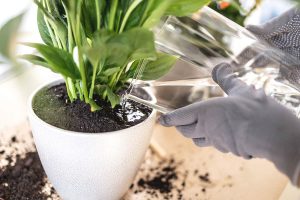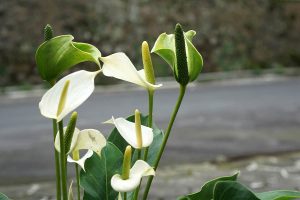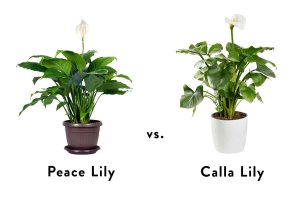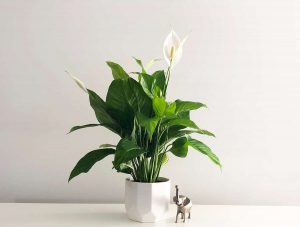Peace Lily houseplants are a popular choice among new plant parents because they have a reputation for being easy to care for. They can tolerate a range of lighting conditions and humidity levels, and they helpfully tell you when they need watering by displaying wilted leaves.
Another way that these plants prove to be low maintenance is the way that they can last for many years in the same size pot without needing to be repotted. Here we explain how to repot Peace Lilies and which pot sizes are most suitable.
Table of Contents
When to Re-Pot a Peace Lily
The Peace Lily actually thrives when it fits very snugly in its pot, with little space for the roots to spread. This state is known as being ‘rootbound’, because the roots are bound by the tight constraints of the pot.
The Peace Lily will not need to be repotted as frequently as other common houseplants because it prefers to be root bound. As such, you don’t need to worry about your Peace Lily needing to be moved to a new pot for years at a time.
When you first purchase your Peace Lily, the pot that it comes in should be a sufficient size in which the plant can grow in for a year or more, so you shouldn’t consider repotting it just yet. Fortunately, the dramatic peace lily will grow bigger and start giving you signs to let you know that it is fed up with being rootbound and wants to upgrade to a pot with a larger living area.
If your Peace Lily is producing deformed or contorted leaves, or the leaves start to wilt very quickly after it has been watered, then these are signals that the plant needs to be moved to a bigger pot. You can also give the plant a manual check by squeezing the plastic pot the Peace Lily is in and feeling resistance.
If you are able to squeeze the pot, then this indicates the Peace Lily roots still have room to grow, whereas if the pot feels solid and not at all malleable beneath your hands, then this is an indication that you should repot the plant.
How to Re-Pot a Peace Lily

You can re-pot a Peace Lily with the same method that you would re-pot any other houseplant. Follow these guidelines if you are new to repotting plants.
- Remove the plant
The first step to repotting a Peace Lily is to remove it from its current pot with as little amount of damage as possible. To do this, squeeze the pot between your hands, while at the same time gently tugging on the stem of the plant at the base just above the soil line. This should allow you to slide the root ball out of the pot without causing distress to the roots.
- Prepare the pot
Select a pot in the next size up, no more than 2 inches bigger in diameter, and fill the base of it with a fresh soil mix. The soil should be well-draining.
- Insert the plant
Next, rub the roots of your plant gently between your fingers to remove the old soil and loosen the structure of the root ball. This will encourage the new roots to take hold and spread in the new pot, while also making room for the fresh soil.
Then, set the root ball into the new pot onto the layer of soil, and fill all around the root ball with more fresh soil. The plant should be sitting at the same level within the pot as it did in its last pot.
- Settle in
Finally, press the surface of the soil down in the pot to encourage stability, and add water to help the plant settle in. You can now continue care as normal.
How to Choose the Correct Pot Size for Peace Lily
When you re-pot a Peace Lily you should be careful not to make too much of a drastic jump in terms of size. This is because when a plant goes from a small pot to a large pot it can get overwhelmed by the amount of nutrients and moisture present in the new soil. A pot which is too big for a plant’s root ball can also increase the likelihood of root rot.
This is because the soil in a large pot will hold a lot of moisture, and if the plant doesn’t have enough roots to absorb this moisture, it can lead to the rotting of the roots.
The best way to choose the right size of pot for your Peace Lily is to opt for a pot which is between 1 and 2 inches bigger in diameter than the previous pot. This will ensure that the plant has additional space for its roots, but it won’t get overwhelmed.
Plant Pot Size Summary
The total height of your plant can also serve as an indication for the size of pot the plant should be in. Here we look at the size of a plant and its correlating plant pot size.
Shelf Plants
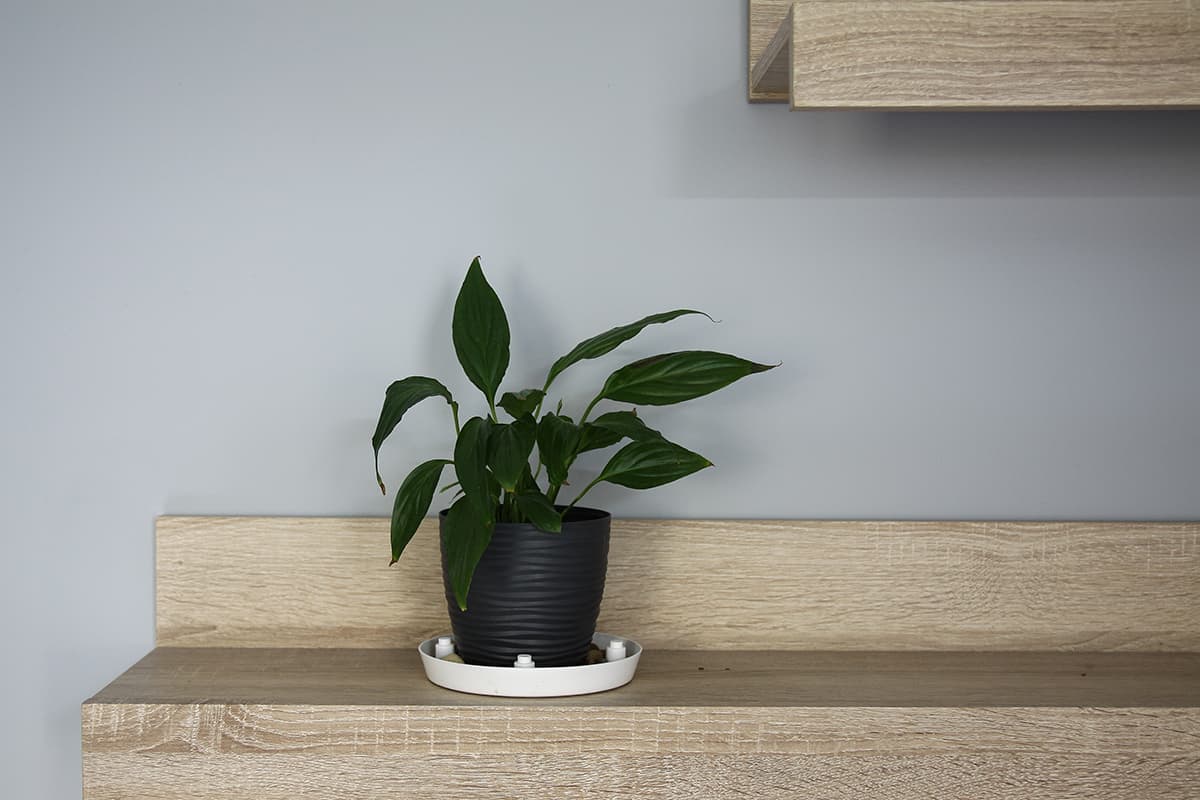
Shelf plants are small or compact Peace Lilies that will fit nicely on a shelf or tabletop. Young Peace Lilies which have not yet matured into tall plants can also be used as shelf plants for the early stages of life.
4 inches
A 4 inch pot is the smallest pot you can expect to buy a Peace Lily in. These are ideal-size pots for dwarf Peace Lilies or immature Peace Lilies. The total height of a plant in a 4-inch pot should be less than 1 foot.
6 inches
A 6-inch pot works well for plants that have a total height of between 1 and 2 feet. This measurement is taken from the base of the pot up to the tip of the tallest part of the plant.
8 inches
Peace Lilies that have a current height of between 2 and 3 feet should be grown in a pot with a diameter of 8 inches. This will be appropriate for the typical size of a root ball when the plant is 2 to 3 feet tall.
Floor Plants
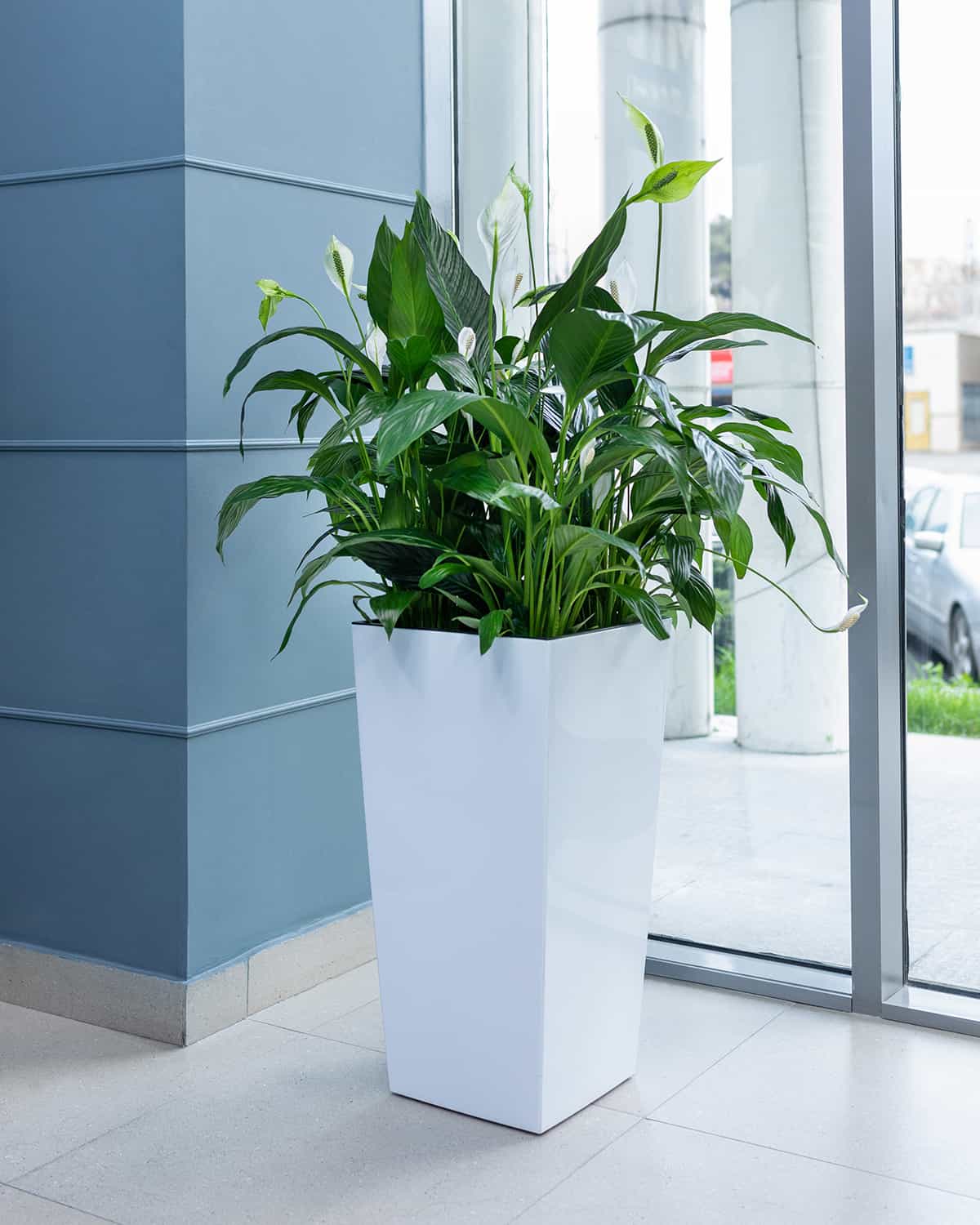
Large varieties of Peace Lily work well as floor plants. These will need big pots to anchor them and ensure they don’t become top heavy and fall over.
10 inches
A 10 inch pot is appropriate for Peace Lilies which have a height of between 3 and 4 feet. These plants will typically be kept as floor plants because of their height, but they could also work well as a dramatic centerpiece on a dining table.
12 inches
Large Peace Lilies, such as the Blue Moon Peace Lily, will need a 12-inch pot to grow in when they have reached maturity. A 12-inch pot is suitable for a Peace Lily, which measures between 4 and 5 feet in height.
14 and 16 inches
The largest pots you can expect to need for a Peace Lily are 14 or 16 inches. These pots work well for giant Peace Lilies, such as the Sensation Peace Lily, which have an ultimate height of between 5 and 6 feet. They offer enough space for roots to remain healthy, while operating as a heavy anchor to prevent the tall plant from toppling over.
